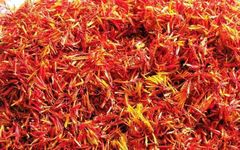Introduction
Reading
Since the outbreak of the COVID-19 pandemic, statistics show that over 70,000 confirmed cases in China have utilized Traditional Chinese Medicine (TCM), accounting for 91.5%. Clinical efficacy observations indicate that TCM has a total utilization rate exceeding 90%, playing a significant role in the treatment of COVID-19, once again proving to the world that “TCM is a vast treasure trove.”
New sections have been launched
To help everyone understand TCM
To popularize TCM culture
Weekly Herb Spotlight:
Safflower
Brief Encyclopedia
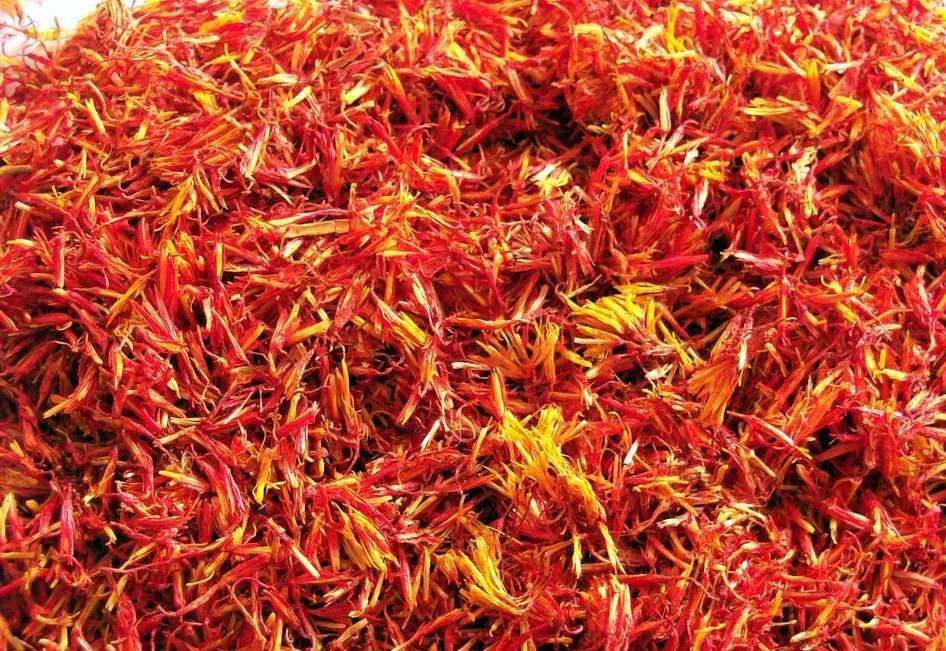
【Name】Safflower
【Alias】Honghua, Red Flower, Grass Red, etc.
【Properties and Channels】Warm, pungent. Enters the Heart and Liver.
【Functions and Indications】Promotes blood circulation, regulates menstruation, and alleviates pain. It can treat blood stasis, amenorrhea, dysmenorrhea, and postpartum abdominal pain due to blood stasis.
【Caution】Contraindicated in pregnant women; pay attention to compatibility with other herbs and control dosage.
Following the success of the film “Your Name” starring Yi Yang Qianxi, his new movie “A Little Red Flower” has also been released recently and is quite popular! I joined in the fun on New Year’s Day, and it tells the story of cancer patients, which is definitely worth a closer look. Several scenes are truly tear-jerking, so remember to bring tissues when you watch it! My neighbor also shed a few tears; as the saying goes, “Men do not easily shed tears,” you can imagine how moving it is. However, the safflower we are discussing today is not the little red flower from the movie!

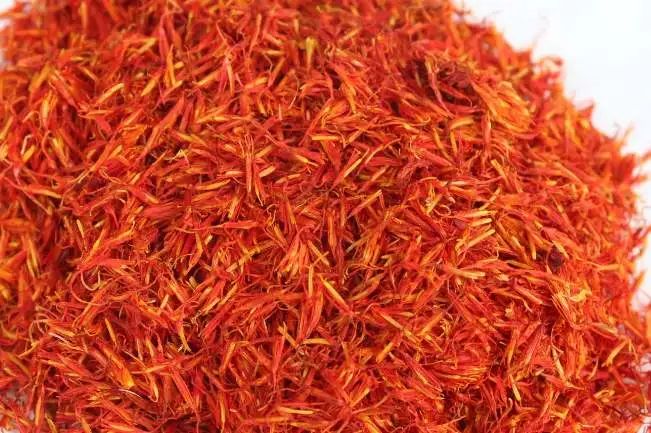
Overview
Safflower is the dried tubular flower of the Asteraceae family, orange-red in color, with a narrow flower tube that splits into five lobes at the tip. The lobes are narrow and linear, with yellow anthers that form a tube, protruding beyond the lobes, and a central stigma. It has a distinctive fragrance and a slightly bitter taste. The best quality has long petals, bright red color, and a soft texture. It is mainly produced in Henan, Hunan, Sichuan, Xinjiang, and Tibet.
Flowers are harvested in summer when they change from yellow to red, then dried in the shade or sun. It is widely cultivated across the country. It has the effects of promoting blood circulation, regulating menstruation, and alleviating pain. It is used for amenorrhea, dysmenorrhea, retained lochia, abdominal masses, chest pain, abdominal pain due to blood stasis, and pain from injuries.

Types of Safflower
There are two types of safflower in traditional Chinese medicine: one is grass safflower, and the other is saffron.
Grass Safflower
Grass safflower was originally called Honghua, and in the “Bencao Shiyi” it is referred to as Huanglan. In the “Ancient and Modern Annotations,” it is called Honglan, and it is not recorded in the “Shennong Bencao Jing.” It is named for its red and blue colors, also known as thorn safflower. In Jiangnan, it is referred to as Du Honghua. The stem grows upright, 45-150 cm tall, with a woody lower part and branching upper part. The leaves are lanceolate with spiny edges, alternate, and nearly stalkless. It blooms in summer, producing large, orange-red, terminal flower heads. The seeds are oval and four-angled.
Originally from Egypt, India, and European countries, it has a history of over 2000 years in China. The seeds can be pressed for oil, and the flowers can be used as dye or medicine. The fruit is called Baipingzi, and it has the same effects as the flowers. The main production areas are in the southern and northern Tianshan regions of Xinjiang, known for its high quality, and it is one of the four famous medicinal materials in Xinjiang.
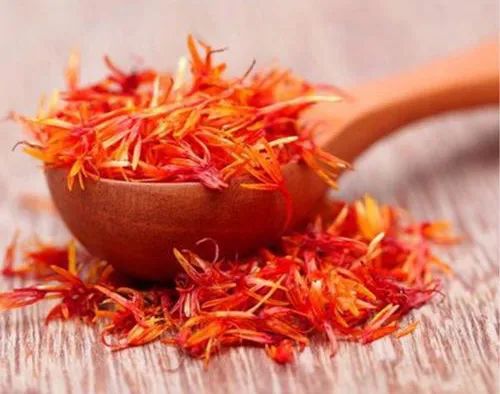
Saffron
Saffron, also known as Crocus sativus, is originally from Europe and Central Asia. It is said that Zhang Qian brought it back from the West, hence it is also called Bofu Lan, Safa Ji, and Safu Lan (all are translations). Li Shizhen stated: “Saffron comes from the Western regions and the land of the heavenly way, which is the red-blue flower from that place. It was used in food during the Yuan dynasty.” Saffron belongs to the Iridaceae family, a perennial herb without an above-ground stem, with a bulbous root similar to that of a daffodil. The leaves are thin like threads, resembling chives. The flowers are terminal, with six petals. The medicinal part is the upper part of the style and stigma, which is low in yield and precious. It is now cultivated in places like Beijing, Jiangsu, and Zhejiang.
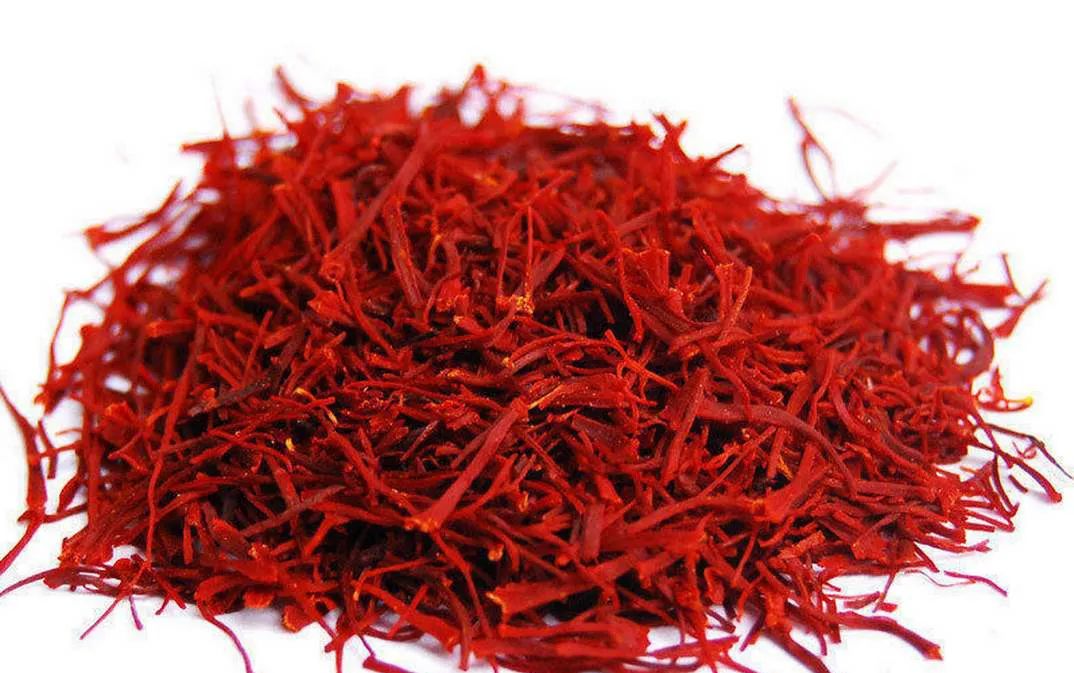
Grass safflower and saffron have similar effects, but saffron is much more potent than grass safflower.

In the market, there is often a mix of genuine and fake precious medicinal materials.
As the saying goes: “Experts see the subtleties, while novices see the excitement.”
Not everyone is an expert.
To avoid being deceived,
let me teach you how to distinguish genuine saffron from fake saffron!
Saffron is scarce and expensive, and there are often fraudsters passing off fakes as real. You can identify its authenticity from five aspects:
① Take a small piece of the product on a glass slide, add a drop of sulfuric acid, and deep blue will appear at the edges, gradually turning purple, then brown-red.
② Take a small sample and immerse it in water; genuine saffron will turn the water golden yellow without any oily floating on the surface. If it turns red and there is an oily film on the surface, it is fake.
③ Take a small sample, immerse it in water, and stir with a stick; genuine saffron does not easily break apart, while if it breaks, it is fake.
④ Take a small sample, add a drop of iodine tincture; genuine saffron does not change color. If it turns blue, blue-black, or purple, it is fake.
⑤ Take a small sample, immerse it in water, and observe with a magnifying glass; genuine saffron has one end that is swollen.
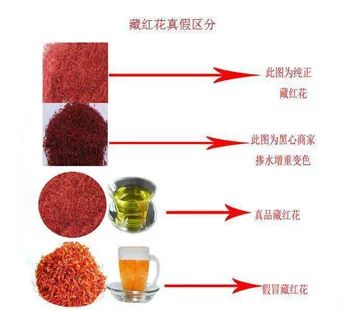
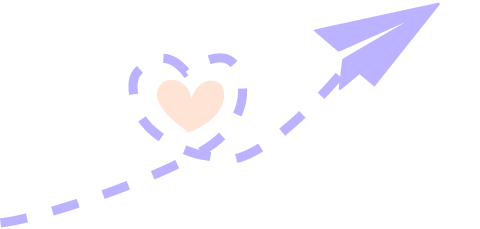
Safflower Anecdote
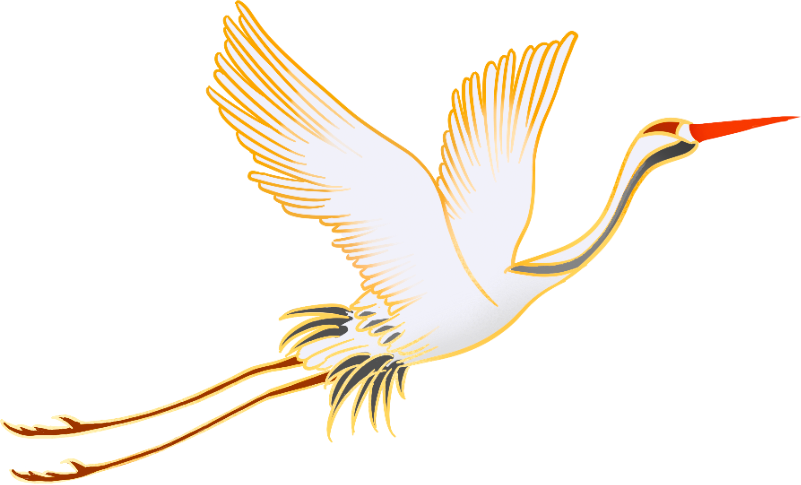
In the Song dynasty, Gu Wenjian’s “Night Talks by the Boat Window” and Qiu Yuan’s “Miscellaneous Histories” recorded a remarkable event:
Lu Yan, a famous physician from Fenghua, Zhejiang, was highly skilled. A woman surnamed Xu from Xinchang fainted after childbirth and traveled over 200 miles to seek Lu Yan. When Lu Yan arrived, he found the woman unconscious, with only her chest still warm. Lu Yan said, “Quickly buy several tens of pounds of safflower; it can save her life.” After the safflower was purchased, he boiled it in a large pot, and when the soup boiled, he placed the woman over a bucket filled with the medicinal liquid to steam her. When the soup cooled slightly, he added another bucket. Soon, the woman’s hands moved slightly, and after a while, she regained consciousness.
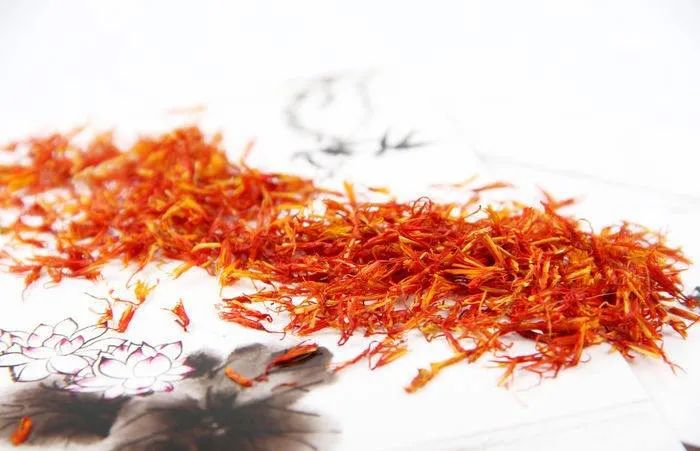
Why is this?
This is because safflower has the effects of stimulating the heart, lowering blood pressure and cholesterol, promoting the contraction of bronchial smooth muscle, and stimulating uterine contractions. However, the dosage must be controlled between 3-9 grams; excessive amounts can lead to continuous bleeding.
Safflower is a gynecological blood medicine. Zhang Zhongjing’s “Jinkui Yaolue” states: “For women suffering from sixty-two types of wind and abdominal blood stasis pain, safflower wine is the remedy.”
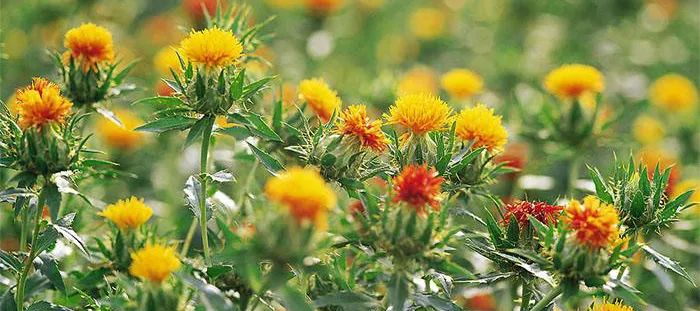
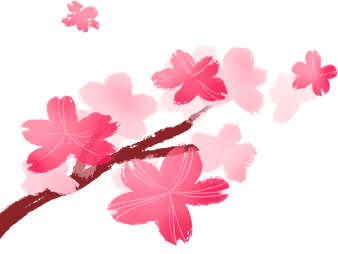
Processing Methods
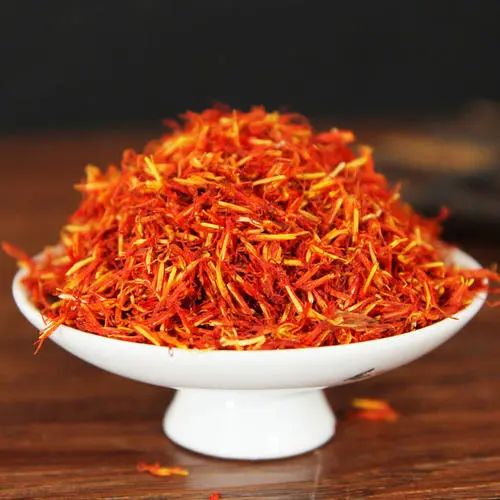
Safflower is generally harvested in summer when the flowers change from yellow to red, then dried in the shade or sun.
Processing Methods:
1. Safflower: Remove impurities, calyx, and flower stalks, and sift out ash.
2. Stir-fried safflower: Place clean safflower in a pan and stir-fry over low heat until slightly charred, then remove and cool.
3. Safflower charcoal: Place clean safflower in a pan and stir-fry over high heat until reddish-brown, spray with a little water to extinguish flames, then remove and cool completely.
4. Vinegar safflower: Spray clean safflower with vinegar evenly, stir-fry over low heat until it turns dark red, then remove and cool. [For every 100 kg of safflower, use 20 kg of vinegar.]

Safflower has a rich variety
It prefers warm, dry climates, is highly cold-resistant, and can tolerate poor soil.
Its strong adaptability makes it easier to cultivate than saffron.
Thus, its varieties are more common,
and its price is not as high as saffron.
|
Variety |
Origin |
Variety |
Origin |
|
Huai Honghua |
Wenxian, Henan |
Xi Honghua |
Shanxi |
|
Du Honghua |
Ningbo, Zhejiang |
Yun Honghua |
Yunnan |
|
San Honghua |
Shangqiu, Henan |
Chuan Honghua |
Sichuan |
|
Nan Honghua |
Nanchong |

+
Functions and Selected Formulas

① “Tang Bencao”: Treats locked jaw, blood clots, and various postpartum diseases.
② “Kaibao Bencao”: Treats postpartum blood stagnation, abdominal pain from retained blood, and stillbirth, and should be taken with wine. Also treats toxic blood loss.
③ “Gangmu”: Promotes blood circulation, moistens dryness, alleviates pain, disperses swelling, and regulates menstruation.
④ “Bencao Zheng”: Treats blood heat that hinders the emergence of measles and disperses rashes due to blood stasis.
⑤ “Bencao Zhaixin”: Promotes urination and reduces swelling, stabilizes pregnancy, and expels dead fetuses.
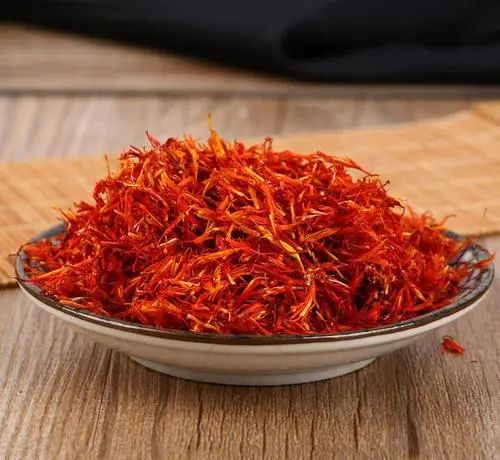
① For treating women’s menstrual obstruction, such as blood stasis: Use good safflower (finely broken), Su Fangmu (crushed), and Danggui in equal parts. Finely chop, and for each use, take one tael, with one and a half liters of water. First, boil the flowers and wood, then add a cup of wine and Danggui, and boil again. Take it warm before meals.
—— “Zhu’s Collected Medical Formulas”
② For treating heat disease and stillbirth: Safflower boiled in wine, drink two or three cups.
—— “Women’s Good Formula Supplement”
③ For treating retained placenta: Safflower boiled in wine, drink two or three cups.
—— “Lactation Collection of Verified Formulas”
④ For treating sixty-two types of wind and abdominal blood stasis pain in women: One tael of safflower. Use one large sheng of wine, boil down to half, and take half at once; if symptoms persist, take again.
—— “Jinkui Yaolue Safflower Wine”

⑤ For treating all swellings: Use safflower, finely knead and extract the juice to take.
—— “Secret Essentials of External Medicine”
⑥ For treating throat obstruction: Safflower juice, one small sheng, take it; if there is no moisture in winter, use dried safflower to soak and extract juice as before.
—— “Sea Collection of Verified Formulas”
⑦ For treating ear discharge and foul-smelling pus: One part safflower, one tael of white alum (burnt to ash). Grind the above medicine into a fine powder, and use a little to insert into the ear.
—— “Shenghui Formula”
⑧ For treating injuries from falls or being pressed against a wall: One part Chuanma, two parts Muxiang, three parts safflower, and four parts licorice. All used raw, ground into powder, and taken with yellow wine.
—— “Emergency Convenient Formula”
+
Active Ingredients

⑴ Safflower wine formula (“Jinkui Yaolue”), has the effects of promoting blood circulation, removing stasis, and alleviating pain.
⑵ Peach Blossom Four Substance Decoction (“Yizong Jinjian”), nourishes blood, promotes blood circulation, and removes stasis. Used together with peach kernel, Danggui, Chuanxiong, Shengdi, and Chishaoyao.
⑶ Blood Mansion Removing Stasis Decoction (“Yilin Gai Cuo”), promotes blood circulation, removes stasis, regulates qi, and alleviates pain, mainly treating blood stasis in the chest, poor blood flow, chest pain, and persistent headaches.
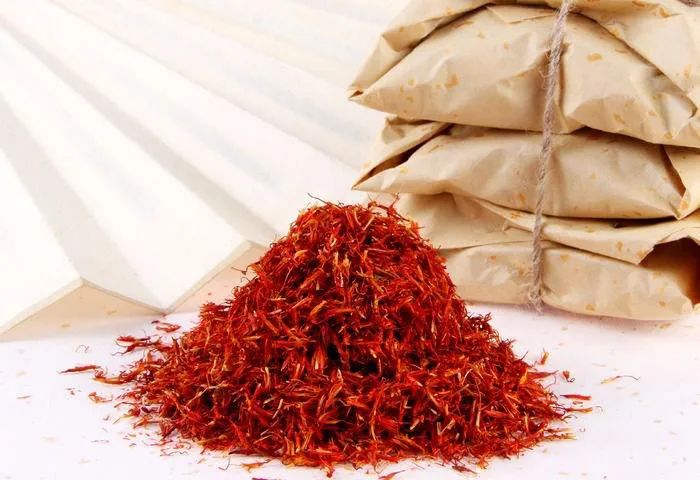
⑷ Open Orifices and Activate Blood Decoction (“Yilin Gai Cuo”), promotes blood circulation and opens orifices, mainly treating headaches and dizziness due to blood stasis, as well as women’s blood deficiency.
⑸ Body Pain Removing Stasis Decoction (“Yilin Gai Cuo”), promotes blood circulation, regulates qi, removes stasis, and alleviates pain, mainly treating shoulder pain, arm pain, lower back pain, leg pain, or generalized pain due to qi and blood stasis.
⑹ Recovery and Blood Activation Decoction (“Medical Invention”), promotes blood circulation, removes stasis, and soothes the liver, mainly treating injuries and stasis under the ribs, causing unbearable pain.
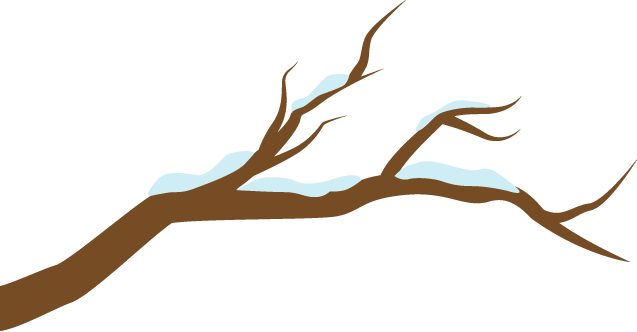
Pharmacological Effects
1. Effects on blood rheology in patients with cardiovascular and cerebrovascular diseases;
2. Effects of safflower glycosides and safflower yellow on hemodynamic changes in myocardial ischemia-reperfusion injury;
3. Effects on experimental cerebral ischemia-reperfusion injury and oxidative free radicals;
4. Anticoagulant and thrombus formation effects;
5. Regulation of calcium ions;
6. Effects on vascular endothelial cells.
Currently, safflower is widely used in clinical practice for treating hyperviscosity, hyperlipidemia, diabetes, erythema nodosum, cancer pain, thromboangiitis obliterans, headaches, intracranial hematomas, chloasma, hair loss, frostbite, flat warts, lichen planus, deafness, prostatitis, termination of early pregnancy, oral ulcers, coronary heart disease angina, cerebral infarction, and primary dysmenorrhea.
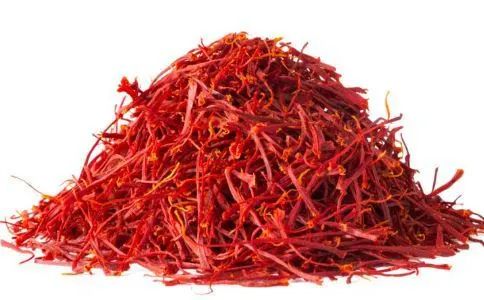

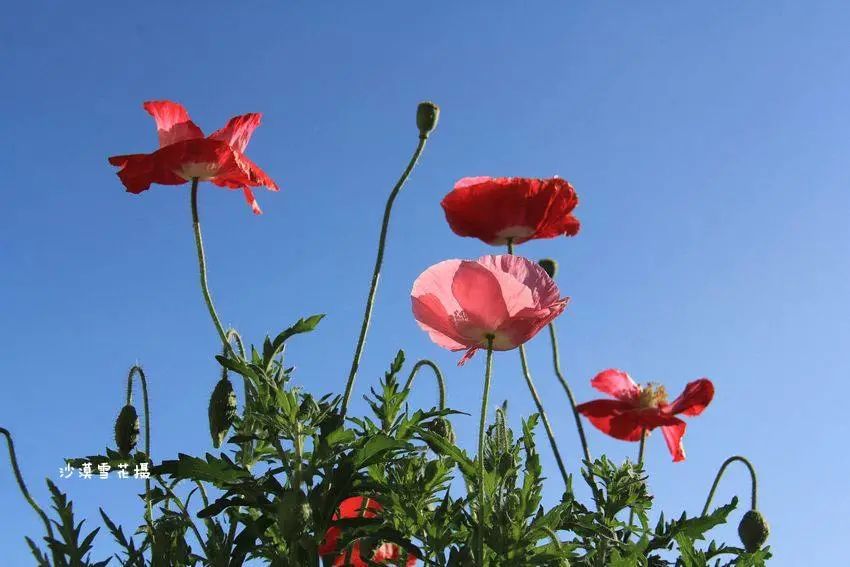
Contraindications
1. Strictly control indications; do not misuse in those with bleeding tendencies; use cautiously in pregnant women.
2. Strictly control compatibility with Western medicine; be cautious when used with anticoagulants.
3. Strictly control dosage; individualize based on condition; prohibit excessive use.
4. Those with a history of safflower allergy should be closely monitored; if symptoms do not improve, immediate symptomatic treatment is recommended.
5. Long-term use of safflower and its preparations should be under the guidance of a physician to ensure safety and efficacy.
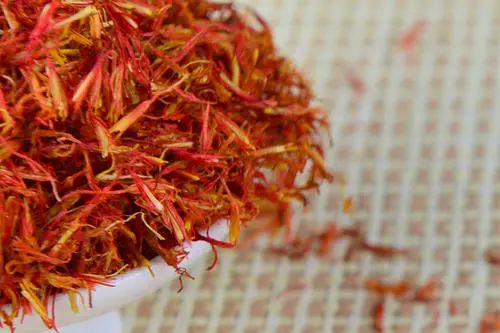
Poisoning Reactions:
Mainly manifested as abdominal discomfort, abdominal pain, diarrhea, and even gastrointestinal bleeding, abdominal colic, and excessive menstrual bleeding in women. [Safflower has a stimulating effect on the intestines and uterus.]
During poisoning, symptoms may include lethargy, tremors, and in severe cases, seizures, with respiratory stimulation followed by suppression, leading to circulatory and respiratory failure. [This is related to safflower’s stimulating effect on the nervous system and allergic reactions.]
The main causes of safflower poisoning are misuse and excessive dosage. Therefore, it is contraindicated in pregnant women and should be used cautiously in those with ulcer disease and bleeding disorders (the decoction should not exceed 3-9 grams).

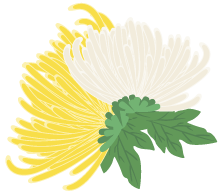
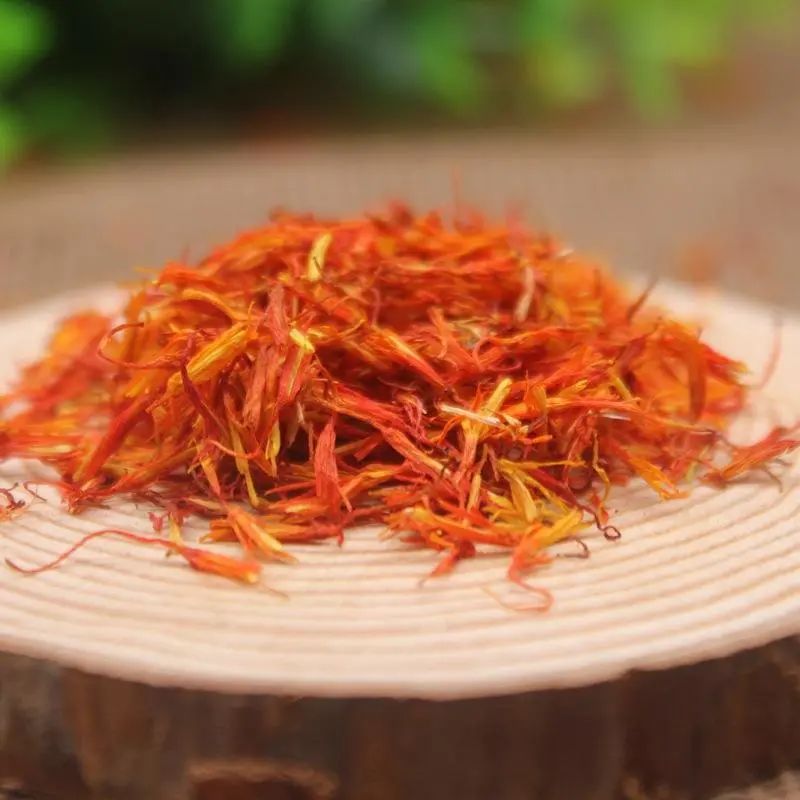 For previous content, please see here~ (click the blue text)
For previous content, please see here~ (click the blue text)
| Summer Kuding | Angelica | Gardenia | Forsythia |
| Lily | Loquat | Chrysanthemum | Chenpi |
| Poria | Yuzhu | Job’s Tears | Chinese Yam |
| Bai Zhi | Shi Hu | Longan | Fen Ge |
| Bai Zhu | Mai Dong | Wu Wei Zi | Qian Shi |
| Pine Nuts | Dan Shen | Huang Qin | Goji Berries |
| Licorice | Saffron | Xuduan | Long Kui |
-END-

